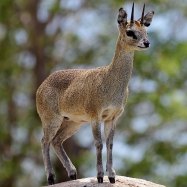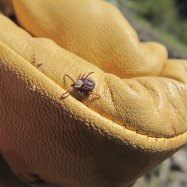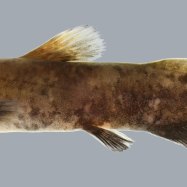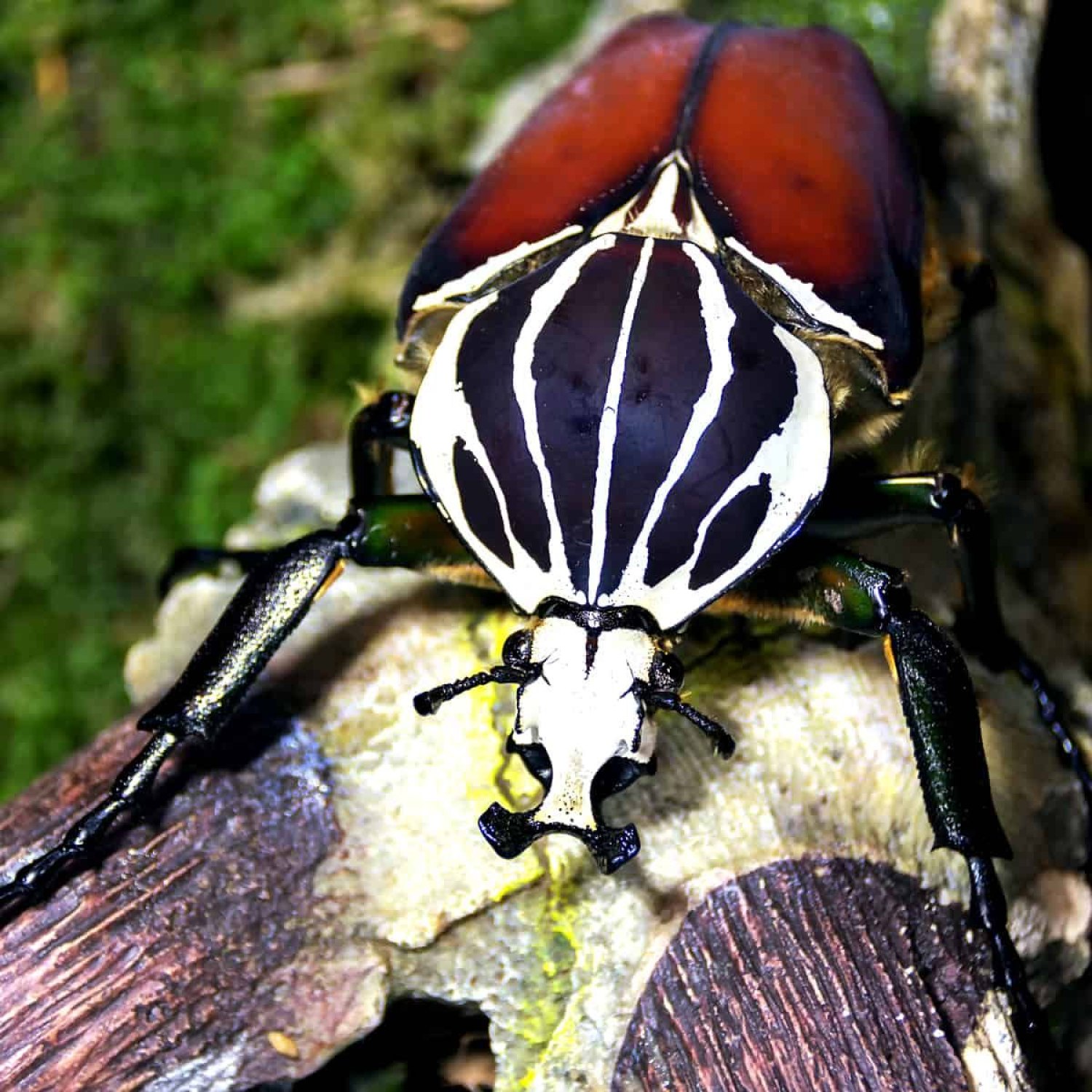
Goliath Beetle
5 - 11.5 cm (2 - 4.5 inches)
The Goliath Beetle, found in the rainforests of Africa, is one of the largest and most fascinating insects on Earth. With a body measuring 5-11.5 cm, it is not just its size that makes it stand out, but also its striking appearance. These beetles can be easily spotted on trees and bushes, thanks to their large and oval body shape. They belong to the Scarabaeidae family and are a must-see for nature lovers. #GoliathBeetle #RainforestInsects #FascinatingFacts
Animal Details Summary:
Common Name: Goliath Beetle
Kingdom: Animalia
Habitat: Tropical rainforests
The Mighty Goliath Beetle: A Magnificent Creature of the Tropical Rainforests
The Goliath Beetle, with its magnificent size and unique appearance, is undoubtedly one of the most fascinating creatures in the animal kingdom. Also known by its scientific name, Goliathus, and commonly referred to as the Goliath Beetle, this insect is a member of the family Scarabaeidae in the order Coleoptera. Its sheer size and impressive features have made it a popular subject of fascination among entomologists and nature enthusiasts alike.Native to the tropical rainforests of sub-Saharan Africa, the Goliath Beetle has captured the attention of many due to its massive size and distinctive coloration Goliath Beetle. Despite its intimidating size, this beetle is a herbivore, and its diet consists mainly of leaves, fruits, and sap. In this article, we will dive deeper into the fascinating world of the Goliath Beetle, exploring its habitat, physical characteristics, and unique behaviors.
The Habitat of the Mighty Goliath Beetle
The Goliath Beetle is a native of the tropical rainforests of sub-Saharan Africa, specifically in countries such as Uganda, Kenya, Tanzania, Zimbabwe, and South Africa. These regions experience a humid and warm climate, with an abundance of vegetation, making it the perfect habitat for these insects.Within the rainforest, the Goliath Beetle can be found living on trees and bushes, where they can easily camouflage with their surroundings. They spend most of their time high up in the canopy, making it challenging to spot them on the forest floor. Their preference for trees and bushes also plays a crucial role in their diet, as they feed on the leaves and fruits found in their immediate environment.
The Physical Characteristics of the Goliath Beetle
One of the most striking features of the Goliath Beetle is its immense size. It is considered one of the largest beetles in the world, with some individuals reaching up to 11 Green Bee Eater.5 cm (4.5 inches) in length. This impressive size makes it a formidable creature in the insect world.The Goliath Beetle has a large and oval-shaped body, with a hard exoskeleton covering its entire body. The exoskeleton is made up of a durable material called chitin, which serves as a protective layer for the insect. The exoskeleton can also come in different colors, but the most common and recognizable color scheme is black with distinctive white markings.
The beetle's coloration plays an important role in its survival in the rainforest. The dark color helps it blend in with the dark and dense vegetation, making it difficult for predators to spot them. The white markings, on the other hand, serve as a warning to potential predators, signaling its toxicity and unpalatable taste.
The Goliath Beetle also has a set of impressive and powerful wings, which it uses for flight. However, despite its large size, it is not known for its flying abilities. It primarily uses its wings for short flights and to navigate from tree to tree within its habitat.
The Feeding Habits of the Goliath Beetle
As previously mentioned, the Goliath Beetle is a herbivore with a primarily vegetarian diet. Its large size allows it to consume large quantities of vegetation, including leaves, fruits, and sap. It feeds on a variety of plants found in its habitat, making it an essential member of the rainforest ecosystem.Interestingly, the Goliath Beetle has an interesting behavior when it comes to feeding. It has evolved with specialized mouthparts that allow it to grasp and tear leaves efficiently. It then uses its strong mandibles to chew the food into smaller pieces, making it easier for digestion.
Similarly, the Goliath Beetle also feeds on sap, which is rich in nutrients and sugars. It has been observed that they are attracted to weakened or damaged trees, where sap would be readily available. This behavior not only helps the beetle sustain itself but also plays an essential role in their environment's ecosystem.
The Goliath Beetle's Role in the Rainforest Ecosystem
The Goliath Beetle is more than just a magnificent creature in the tropical rainforests; it also plays a crucial role in its ecosystem. As mentioned earlier, its diet consists mainly of vegetation, making it an essential pollinator and seed disperser. By feeding on various plants and flowers, it helps with the pollination process, contributing to the rainforest's richness.Similarly, as a seed disperser, the Goliath Beetle plays a vital role in the rainforest's regeneration. Its large size and powerful wings allow it to carry seeds over long distances, helping to distribute plant life throughout the rainforest. This role also helps to maintain a healthy balance in the rainforest ecosystem.
Threats to the Mighty Goliath Beetle
Despite its impressive size and fascinating behaviors, the Goliath Beetle is facing several threats that put its survival at risk. The primary threat to these magnificent creatures is habitat loss. As human activities, such as deforestation, continue to expand, the Goliath Beetles' habitat is being destroyed, leaving them with limited resources to survive.The illegal wildlife trade is also another significant threat to the Goliath Beetle. As with many other exotic and exotic creatures, the Goliath Beetle is sought after for its size and unique appearance. They are often captured and sold in the illegal pet trade or used as souvenirs, which significantly impacts their population in the wild.
To protect the Goliath Beetle and its habitat, conservation efforts have been put in place, including protected areas and laws against illegal trading. Education and awareness programs have also been initiated to raise awareness of the beetle's ecological importance, encouraging people to appreciate these creatures in their natural habitat.
In Conclusion
The Goliath Beetle is undoubtedly a magnificent and fascinating creature, perfectly adapted to its natural environment. From its massive size and unique coloration to its essential role in the rainforest ecosystem, this beetle truly captures the imagination and awe of those who encounter it.While it may face threats to its survival, conservation efforts and education are crucial in preserving this magnificent creature for future generations to appreciate. As we continue to explore and discover the wonders of the natural world, let us also do our part in protecting and preserving its treasures, such as the mighty Goliath Beetle.

Goliath Beetle
Animal Details Goliath Beetle - Scientific Name: Goliathus
- Category: Animals G
- Scientific Name: Goliathus
- Common Name: Goliath Beetle
- Kingdom: Animalia
- Phylum: Arthropoda
- Class: Insecta
- Order: Coleoptera
- Family: Scarabaeidae
- Habitat: Tropical rainforests
- Feeding Method: Herbivorous
- Geographical Distribution: Sub-Saharan Africa
- Country of Origin: Various countries in Africa
- Location: Trees and bushes in the rainforest
- Animal Coloration: Black with distinctive white markings
- Body Shape: Large and oval
- Length: 5 - 11.5 cm (2 - 4.5 inches)
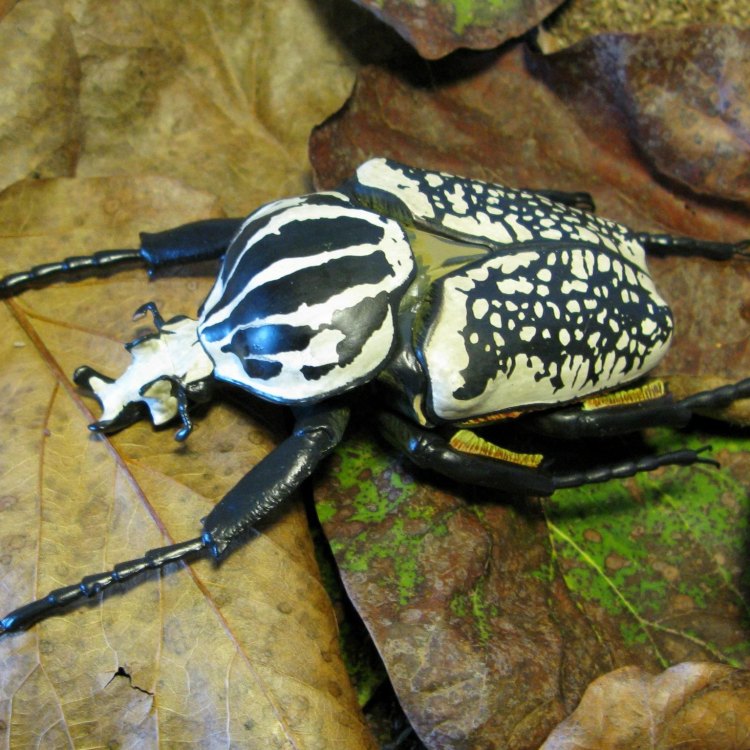
Goliath Beetle
- Adult Size: One of the largest beetles in the world
- Average Lifespan: 4 - 5 months
- Reproduction: Sexual
- Reproductive Behavior: Male beetles use their large horns to fight over mates
- Sound or Call: Goliath beetles do not produce any sound or call
- Migration Pattern: Non-migratory
- Social Groups: Solitary
- Behavior: Mostly active at night
- Threats: Habitat loss, deforestation, and illegal collecting for the pet trade
- Conservation Status: Some species are listed as vulnerable or endangered
- Impact on Ecosystem: Goliath beetles play a role in pollination and nutrient recycling in the rainforest ecosystem
- Human Use: Collected for display in insect collections or used for educational purposes
- Distinctive Features: Large size and impressive horns on males
- Interesting Facts: Goliath beetles can carry objects up to 850 times their body weight
- Predator: Predatory birds, reptiles, and mammals
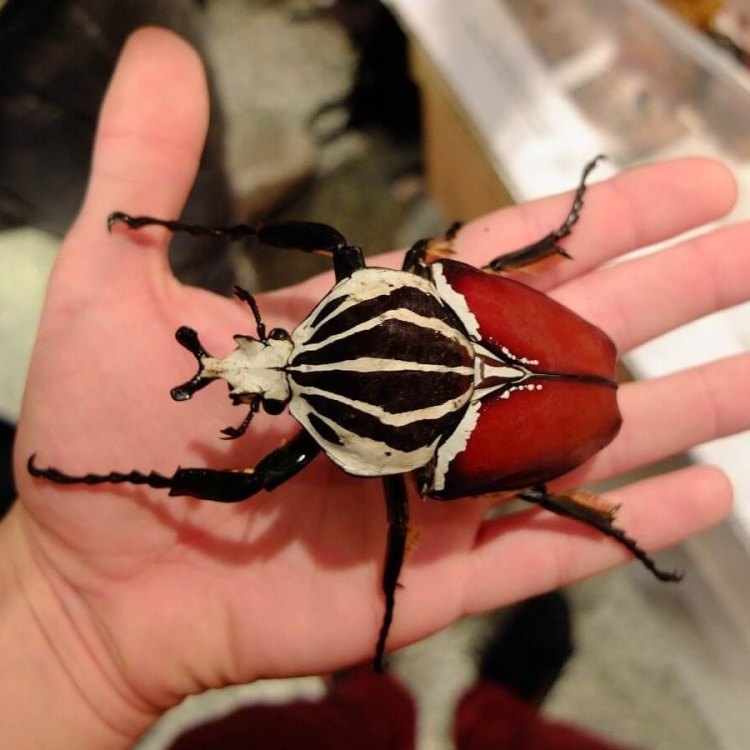
Goliathus
The Mighty Goliath Beetle: A Fascinating Giant of the Insect World
Deep in the dense rainforests of Africa, a mighty creature roams the forest floor, unmatched in size and strength by any other insect. This creature is none other than the Goliath beetle, one of the most intriguing and unique species in the world.With a name derived from the biblical giant Goliath, these beetles live up to their namesake in every way, from their impressive size to their robust and formidable appearance. Let's delve into the world of the Goliath beetle and discover what makes them such a remarkable species PeaceOfAnimals.Com.
An Adult Size Like No Other
The most striking feature of the Goliath beetle is undoubtedly its size. As one of the largest beetles in the world, these insects can grow up to 11 centimeters in length and weigh as much as 100 grams. To put that into perspective, that's about the size of a small apple or a child's hand.The Goliath beetle's sheer size is a result of its unique life cycle. Like most beetles, they undergo complete metamorphosis, starting as an egg, then a larva, pupa, and finally, an adult. However, unlike other insects, their larval stage can last up to 2 years, allowing them to grow to such impressive sizes.
A Short but Eventful Life Span
Despite their giant size, Goliath beetles have relatively short lives. On average, they live for only 4-5 months in the wild. Their short lifespan is due to their large size, making them more vulnerable to predators and other environmental factors German Cockroach.Sexual Reproduction and Mating Behavior
Goliath beetles reproduce sexually, meaning a male and female must come together to produce offspring. Males use their impressive horns to fight off competitors during the mating season and establish dominance to attract a mate.The fights between males can be quite intense, with both beetles using their sharp and sturdy horns to push and shove each other. The more dominant male will eventually win the right to mate with the female.
The Silent Giants of the Forest
Despite their size and impressive mating rituals, Goliath beetles do not produce any sound or call. They communicate with each other using pheromones, chemicals that are released into the air to attract potential mates.A Non-Migratory Lifestyle
Goliath beetles are non-migratory insects, meaning they do not undertake long-distance journeys like some other species. They are highly adapted to their rainforest habitat and do not feel the need to move to other locations.Solitary Creatures
Unlike some other species of beetles that live in large groups or colonies, Goliath beetles are solitary creatures. They prefer to live and forage alone, only coming together during the mating season.Nocturnal Behaviors
Goliath beetles are mostly active at night, using their keen sense of smell to locate ripe and rotting fruit for food. They are proficient climbers, using their strong and spiky legs to scale trees and reach their desired food sources.Threats to Goliath Beetles
Like many other species in the animal kingdom, Goliath beetles face numerous threats to their survival. The main dangers come from habitat loss and deforestation, which destroys their natural habitat and food sources.These beetles are also at risk from illegal collecting for the pet trade, with some collectors willing to pay high prices for these magnificent creatures. This destructive practice not only harms Goliath beetle populations but also disrupts the delicate balance of the rainforest ecosystem.
Conservation Status
Due to their declining populations, some species of Goliath beetles are listed as vulnerable or endangered on the IUCN Red List of Threatened Species. These include the Goliathus goliatus, Goliathus regius, and Goliathus orientalis.Efforts are being made to protect these magnificent creatures and their habitats through initiatives such as conservation projects and sustainable tourism. Education and awareness about the importance of preserving these beetles are also crucial in their conservation efforts.
The Important Role of Goliath Beetles in the Ecosystem
Despite their intimidating size and appearance, Goliath beetles play a crucial role in their rainforest ecosystem. As adults, they feed on fruits and help with pollination, playing a crucial role in the reproduction of plants.Their larvae, on the other hand, play a crucial role in nutrient recycling by feeding on decaying plant matter. By breaking down these materials, they contribute to the nutrient cycle, which is vital for the survival of plants and other organisms in the rainforest.
Without these incredible beetles, the delicate balance of the rainforest ecosystem would be disrupted, leading to potentially devastating consequences for the entire ecosystem.
The Human Use of Goliath Beetles
In addition to their ecological importance, Goliath beetles have also captivated the interest of humans. They are often collected for display in insect collections or used for educational purposes.In some African cultures, Goliath beetles are also considered a delicacy and are eaten for their high protein content. However, this practice is not widespread and may pose a threat to the beetle's populations if not regulated properly.
Distinctive Features of the Mighty Goliath Beetle
Aside from their immense size, Goliath beetles have several unique and distinctive features. The most striking is, of course, the impressive horns on the male beetles, used to establish dominance during fights for mating rights.Additionally, they have a hard and shiny exoskeleton that comes in an array of colors, from shades of green and brown to vibrant blues and purples. Their wings are also highly recognizable, with intricate patterns and designs that vary between species.
Amazing and Surprising Facts about Goliath Beetles
Apart from their large size and impressive horns, there are many other fascinating facts about Goliath beetles that may surprise you. For instance, did you know that they can carry objects up to 850 times their body weight?These beetles are also quite the acrobats, able to lift as much as 1.5 times their own weight with their strong legs. And despite their intimidating appearance, they are harmless to humans and are not aggressive unless provoked.
Natural Predators of Goliath Beetles
Despite their size and impressive strength, Goliath beetles are not invincible. They have several natural predators, including predatory birds, reptiles, and mammals. These animals often hunt Goliath beetles for food, and their large size can make them an easy target.Conclusion
In conclusion, Goliath beetles are truly remarkable creatures, unmatched in size and strength by any other insect in the world. Their fascinating behaviors, unique features, and important role in the rainforest ecosystem make them a species worth protecting and studying.However, with increasing threats to their survival, it is crucial that we take steps to conserve and protect these mighty creatures. Through education, awareness, and responsible environmental practices, we can ensure that the Goliath beetle continues to reign as the king of the insect world for generations to come.
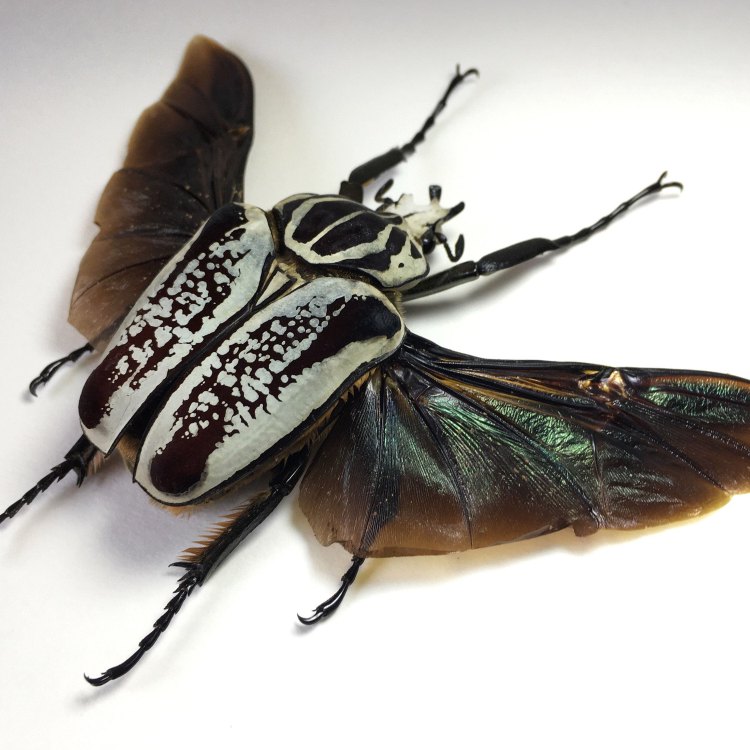
The Mighty Goliath Beetle: A Magnificent Creature of the Tropical Rainforests
Disclaimer: The content provided is for informational purposes only. We cannot guarantee the accuracy of the information on this page 100%. All information provided here may change without prior notice.





